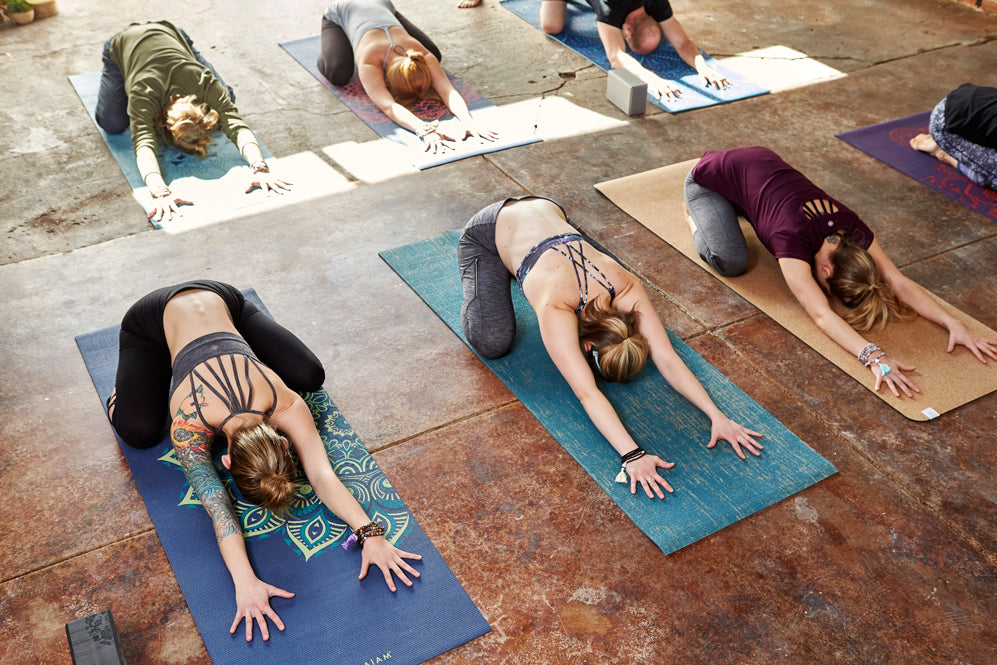Keeping Your Zen - A Guide to Yoga Insurance

In partnership with beYogi
Regardless of a yoga teacher’s best effort to teach safe yoga practices, injuries happen. There are times when students push themselves too far, practice yoga postures incorrectly, or forget to tell the instructor about their medical conditions.
With hundreds of yoga-related emergency room visits each year and even more visits to the doctor, injuries happen more often than most people are aware of. Which is why having yoga insurance is more important than ever before.
Lawsuits can be expensive and having your reputation ruined because of something as simple as a sprained wrist can be devastating. By purchasing yoga insurance, you can be protected against claims regarding unexpected accidents that come along with teaching yoga, even if the situation at hand is not your fault.
Along with general and professional liability coverage, additional benefits differ depending on the provider. However, the best yoga insurance policies should include a professional website, stolen equipment coverage, identity protection, rental damage, no membership fees, and should cover several modalities.
An insurance plan such as beYogi’s covers 350 styles of yoga, massage, pilates, and various other wellness practices. And while you may be teaching at one studio for now, you never know what the future holds, you could end up teaching at a retreat or a festival outside of your area—beYogi’s insurance plan will follow you no matter where you teach.
Yoga liability insurance is good for more than just the liability: beYogi’s insurance plan covers lost or stolen equipment and offers bonus resources such as a free business website, discounts to some of your favorite yoga brands, and professional resources for all yoga teachers.
Who exactly needs yoga insurance?
With thousands of students practicing yoga every year, yoga studio owners should make sure they protect themselves against injury claims. All yoga studios, yoga teachers, and yoga students should carry yoga insurance.
While most studios carry their own insurance, yoga teachers shouldn’t assume that they’re covered. Teachers who don’t have policies of their own may not be aware of the legal side of their yoga studio’s policy, so having your own coverage is essential.
Also, teacher trainees should carry yoga insurance. As these trainees go through training and build confidence teaching friends—they should be covered no matter where they are teaching.
What are some reasons to have yoga insurance?
In 2010 the U.S. Consumer Product Safety Commission reported 7,369 yoga-related injuries—these injuries included visits to doctor’s offices, clinics, and emergency rooms for over-stretching and straining.
Frightening injuries, ligaments that are overstretched, and severe sprains do happen more than you think. And with more and more people practicing yoga each year, there are an increasing number of injuries happening all around us.
While our practice is in our own hands, you as a teacher may still be held responsible for injuries or accidents that do occur. Lawyer fees alone can be extremely pricey—so why not invest in something such as yoga insurance to give you the zen and peace of mind that you need?
Need more reasons to purchase yoga insurance? Rental damage and stolen equipment. Two reasons you should definitely be carrying insurance. You never know when someone might steal or damage your yoga studios’ rental equipment!
What yoga insurance plan is right for me?
To find the right insurance plan for you, you must first, look for a policy that covers the type of yoga you teach, as you don’t want to assume that all styles are covered. New yoga styles come up all the time and some are in a gray area between yoga and medicine, such as Naam Yoga Therapy or Acu-Yoga.
Secondly, choose a plan with at least $2 million in liability coverage per occurrence. This might sound like a lot of money, but in a lawsuit-happy country, million-dollar lawsuits are becoming even more common.
If you’re a yoga teacher and a cosmetologist, massage therapist, or pilates instructor, for example, one plan can protect you no matter which modality you fall under. This can be important if you combine different forms of wellness practices with yoga!
With the popularity of yoga continuing to increase year after year, and with more people becoming instructors than ever before, insuring yourself is one of the best things you can do to assure that you have a long and successful career. To learn more about accessible Insurance coverage for wellness professionals, visit beyogi.com
Also in Blog

Body Peace & Personal Empowerment

Yoga for Swimmers: Poses for Strength and Mobility

